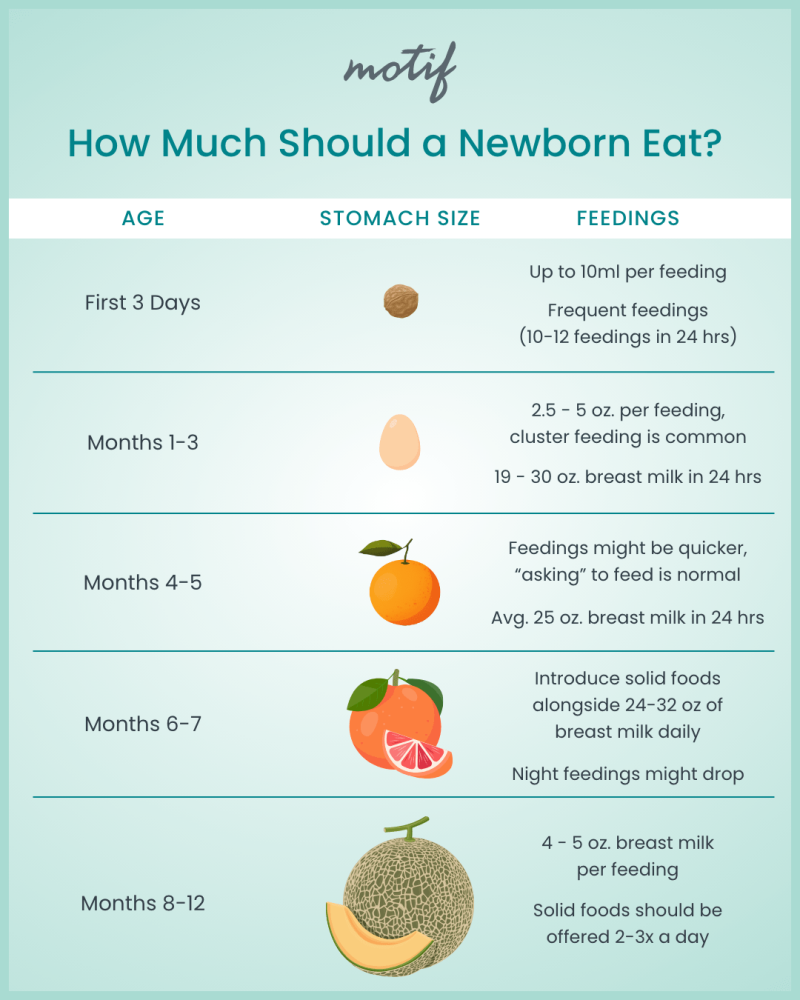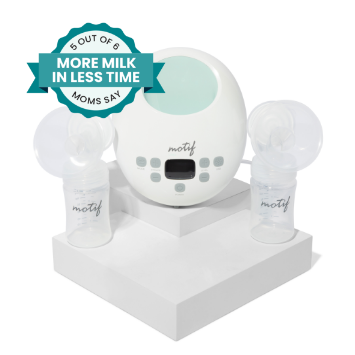How Much Milk Should a Newborn Drink? A Feeding Guide
Do you remember how fast those months of pregnancy went and how much your baby (or babies!) grew in that amount of time? It began as a bundle of cells and evolved into a package of joy. This trend continues outside the womb, with significant changes occurring over a relatively short period. The first two weeks of a newborn's life are considered the most challenging, as the mother and child are on a learning curve, trying to keep up with hunger cues and satiety signals.
Newborn Feeding Chart: How Many Ounces by Age


For a quick reference, here is a general guide to feeding amounts for babies. Remember that every baby is different, and these are just averages.
Newborn Feeding Milestones in The First Month
Your baby grows incredibly fast, and their feeding needs evolve just as quickly. Here’s a breakdown of what to expect in the first month of the baby's life.
Days 1-3: The Colostrum Phase
During the first few days, your body produces colostrum, often referred to as "liquid gold." This early milk is thick, yellowish, and packed with antibodies and nutrients. A newborn's stomach is tiny—about the size of a cherry. Feedings increase from just 2-10 ml per feeding in the first 24 hours to 15-30ml per feeding on Days 2 and 3.
Because of this small capacity, feedings will be very frequent, with an aim of 10-12 feedings in a 24-hour period. It might feel like you're constantly nursing, and that’s perfectly normal. This frequency is essential for providing your baby with the calories they need and helps prevent issues like jaundice and low blood sugar.
Days 4-7: More Milk Arrives
Around days 3 to 5, you’ll see a significant uptick in milk production. This is often referred to as “milk coming in”. As your milk supply increases, your baby will start taking in more volume, typically between 110 ml to 2 ounces per feeding.
This is also when you can use diaper output to gauge how well your baby is eating. Stools should transition from black and tarry (meconium) to green, and finally to a mustard-yellow color by day 4.
A key indicator of adequate intake is counting wet diapers: by day four, you should be seeing four or more wet diapers a day, increasing to six or more after that.
Amounts per feeding: 1 oz
Amounts per day: 12+ oz
Week 1-3: Cluster Feedings and Regaining Birthweight
You may also experience "cluster feeding," especially in the evenings. This is when your baby wants to nurse very frequently, sometimes every 30 minutes, with short breaks in between. This is a completely normal phase. It doesn't mean you have a low milk supply; it's your baby's way of stimulating your body to produce more milk for their future needs.
Amounts per feeding: 2 to 4 oz, less for clustering
Amounts per day: 12 to 24 oz
Weeks 3-4 & Beyond: Establishing a Rhythm
By the end of the first month, you and your baby are likely finding a breastfeeding rhythm. Your baby can now take in 2.5-5 ounces of milk per feeding. From one to six months of age, a breastfed baby's milk intake remains surprisingly constant, ranging from 19-30 ounces per 24-hour period.
At this stage, it’s best to continue feeding on demand, responding to your baby’s unique hunger cues. Waiting to introduce a pacifier until breastfeeding is well-established (usually around 3-4 weeks) is often recommended to ensure your baby is nursing effectively and hunger cues are missed.
Amounts per feeding: 2.5-5oz, less for clustering
Amounts per day: Average of 25oz
How to Know if Your Newborn is Getting Enough Milk
Beyond tracking ounces and diapers, your baby gives you clear signals. Learning to read these signs is one of the most reassuring skills you can develop.
Reading Your Baby's Hunger Cues
-
Waking up and becoming more alert
-
Moving their head from side to side (rooting)
-
Bringing their hands to their mouth
-
Smacking or licking their lips
-
Opening and closing their mouth
Crying is a late sign of hunger. Try to feed your baby when you notice these earlier cues.
Monitoring Diaper Output and Weight Gain
Consistent monitoring provides the best evidence that your baby is thriving:
-
Diapers: Look for at least 6+ wet diapers per day after Day 5 and 3+ soft, yellow stools per day after Day 3
-
Weight: Your baby should regain their birth weight by 10-14 days old and then continue to gain weight steadily.
-
Behavior: A well-fed baby will seem content and satisfied after most feedings and will be alert and active when awake.
When to Consult a Lactation Consultant (IBCLC)
Trust your instincts. If you feel something is off or you're struggling with breastfeeding, don't hesitate to seek professional help. An International Board Certified Lactation Consultant (IBCLC) is a valuable resource.
Contact an IBCLC or your pediatrician if you notice:
-
Your baby is not regaining their birth weight by two weeks.
-
Fewer than six wet diapers in a 24-hour period (after day 5).
-
Fewer than 3 stools per day after Day 3.
- Dark brown, green, or black stools after Day 4.
-
Your baby is consistently fussy, lethargic, or seems hungry all the time.
-
You are experiencing significant pain during latching or throughout feedings.
Remember, you and your baby are a team on a learning curve. Being patient with yourself and seeking support are key parts of a successful breastfeeding journey.
Support Your Journey with the Right Tools
Whether you're establishing your milk supply, sharing feeding duties with a partner, or planning your return to work, a reliable breast pump is essential. For moms who want comfort, convenience, and hospital-strength performance, Motif Breast Pumps are designed to help you pump more milk in less time.
Many moms can get a Motif breast pump 100% covered by their insurance plan. Fill out our quick and easy form and find out if you qualify through insurance today.
Information provided in blogs should not be used as a substitute for medical care or consultation.








